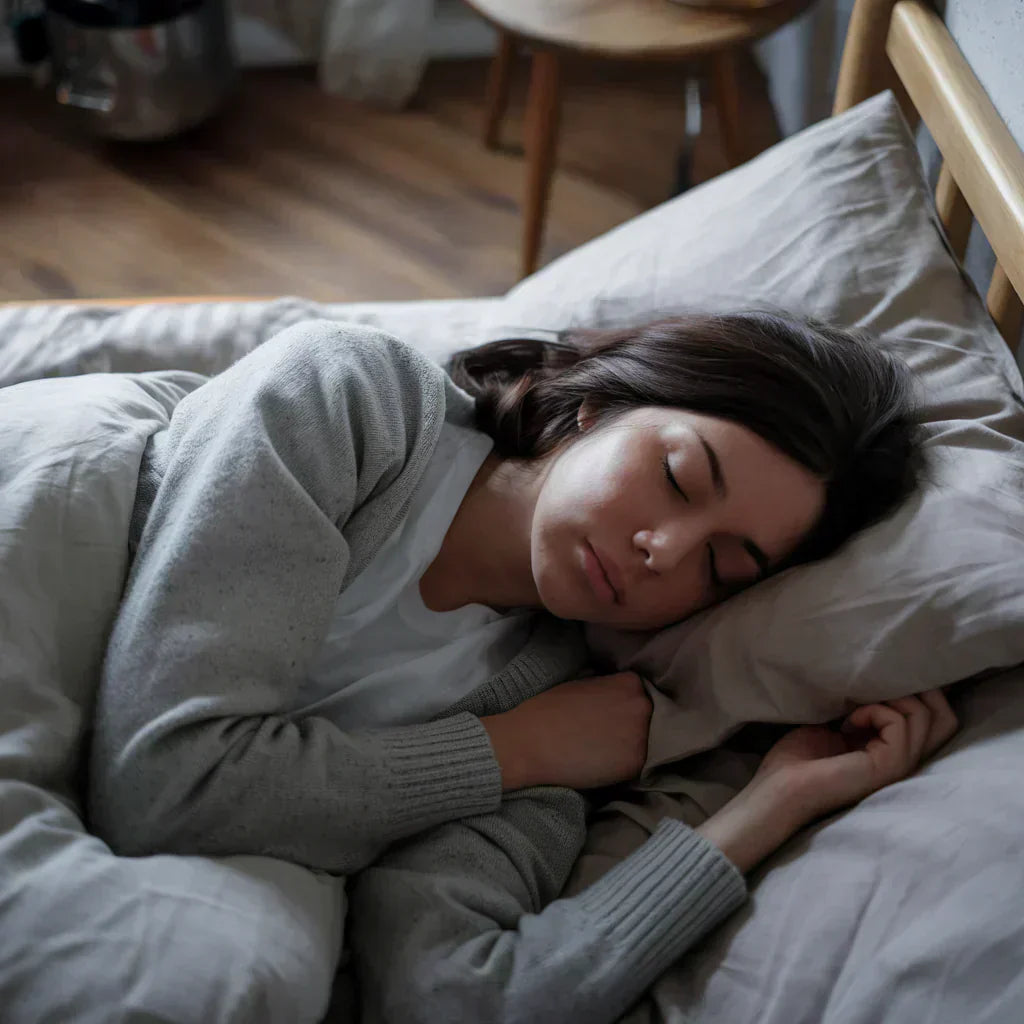Around 80% of people will suffer from back pain at some point in their lives. In the United States, over one-quarter of adults are dealing with back pain at any given time. These numbers prove just why taking steps to prevent back pain is so important. Considering the amount of time that we spend unconscious, the way you sleep is one of the most important ways that you can take care of your back.
Why Sleep Position Matters
How Your Sleep Position Affects Your Spine
The health of your spine depends a lot on the way that you sleep. The right sleep position will support your spine’s natural curve, reducing pressure on the interspinal disks and ligaments. For example, when you sleep on your back with a pillow under your knees, or when you sleep on your side with a pillow between your knees, you’re in a position that keeps your spine aligned and makes you less likely to develop back problems. A healthy sleep position also promotes better blood circulation and allows your muscles to relax, letting you get more restorative sleep.
Why Some Sleep Positions Cause Back Pain
An unhealthy sleep position can be disastrous for your back. When your spine isn’t correctly aligned, your muscles have to compensate, which often leads to stiffness the next morning. An incorrect sleeping position can also put pressure on the nerves, causing back problems or worsening existing ones. If your back pain is accompanied by other symptoms and you want to know if you have a more serious condition.
Sleep Positions to Avoid
When you have back pain, try not to sleep in these positions, which can risk making the problem worse:
- Stomach Sleeping: Sleeping on your stomach puts an excessive arch in your spine. It can cause pain and tension in the neck and lower back.
- Starfish Position: Even if spreading out like a starfish may seem comfortable, sleeping with your arms above your head can lead to pain in the neck and shoulders.
- Fetal Position: Fetal position can be a great position to sleep in when done right. However, if you’re curled up too tighly or your knees are too close to your chest, it can cause lower back pain and prevent you from breathing deeply.
Avoiding these positions can reduce your risk of developing back pain and improve the quality of your sleep.
The Best Sleep Positions for Back Pain
Back Sleeping
Sleeping on your back is great for back pain, as it distributes your weight more evenly and aligns your spine. To make this position even more comfortable, you can reduce pressure on your lower back by placing a pillow under your knees.
Side Sleeping

Sleeping on your side can also be beneficial when you have back pain, since this position aligns your hips, pelvis, and spine. A pillow between your knees will make this way of sleeping even better for you.
You can also use a thick pillow to fill the gap between your mattress and your head, which will keep your neck in a more natural and painless position.
Fetal Position
Fetal position—sleeping on your side with your knees bent slightly towards your chest—is ideal when you’re sleeping with back pain. This position keeps your spine aligned and minimizes tension.
Whether you choose to sleep on your back, on your side, or in fetal position, you can rest assured that you’re giving yourself a healthier back and an easier night of sleep.
Hints and Tips for Relieving Bedtime Back Pain
Beyond sleeping in a healthy position, you can also use the following techniques to manage your back pain as you hit the sack.
Use Pillows for Support
Pillows can be your greatest ally when it comes to sleeping with back pain. If you sleep on your back, place one under your knees. If you sleep on your side, place it between your knees instead.
Choose the Right Mattress and Pillow
The right mattress and pillow are key tools to getting a night of rejuvenating, pain-free rest. Choose a mattress with adequate support, like a memory foam mattress. As for your pillow, make sure to select one that keeps your head in line with your spine.
Adjust Your Posture During the Night
When it comes to back pain, your sleep position matters. Try to make sure that your back stays straight and aligned the whole night through. Don’t twist your body. We recommend sleeping either on your back, on your side, or in fetal position, but there’s no need to remain in just one of these positions for the entire night. Feel free to switch between them!
Hot Bath, Hot Water Bottles, and Other Home Remedies

A hot bath with Epsom salt, a hot water bottle on the affected area, and numerous other home remedies can help you relieve your back pain before you even get in bed.
By adding these techniques to your sleep routine, you’ll be able to significantly lessen your back pain and enjoy far more restorative sleep.
Altogether, a healthy sleep position, an appropriate mattress and pillow, and a few home remedies are all it takes to be able to get a great night of pain-free sleep!











